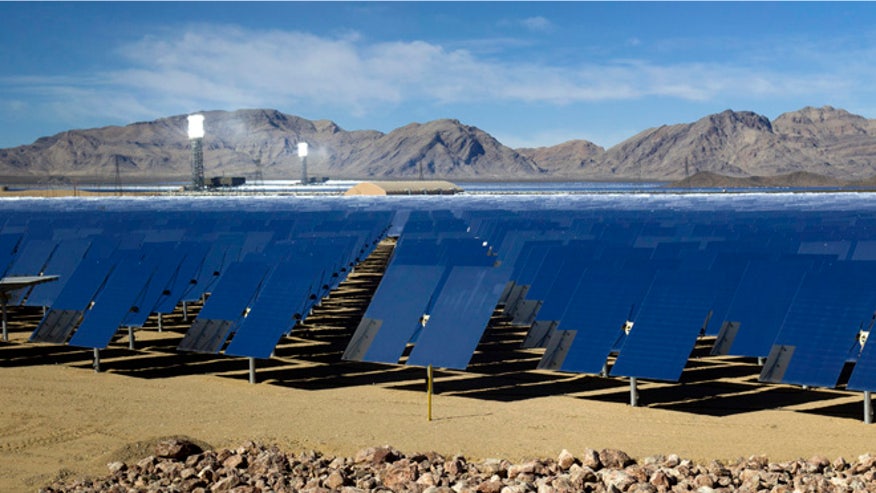This is an interesting article. It should not surprise anyone that a plant using natural gas, even as a back up, has emissions.
If you consider natural gas a bridge fuel, and certainly cleaner than other forms of fossil fuel, it makes an excellent secondary source to a renewable that is not always producing energy. That does not mean the plant does not justify investment. There's still a lot of clean energy coming from there.
Controversy around protecting wildlife is a very different issue, one that got grilled as BLM and environmental agencies in CA decided to open up millions of dessert acres to renewables. All forms of development impact our natural resources and conditions for life. There's no perfect technology. What is the net effect on those same birds exposed to continuing high levels of carbon if power supply does not change?
We assume potential battery storage nearby could alleviate even this small use of natural gas to reinforce the solar.
Taxpayer-backed solar plant actually a carbon polluter
By Jennifer G. Hickey

In this Feb. 13, 2014 file photo, mirrors are shown during a tour of the Ivanpah Solar Electric Generating System in the Mojave Desert near the California-Nevada border. (Reuters)
Even as the Obama administration announces another $120 million in grants to boost solar energy, new reports indicate a centerpiece of the administration's green-energy effort is actually a carbon polluter.
Yet it is producing carbon emissions at nearly twice the amount that compels power plants and companies to participate in the state's cap-and-trade program.
That's because the plant relies on natural gas as a supplementary fuel.
According to the Riverside Press-Enterprise, the plant burned enough natural gas in 2014 to emit 46,000 metric tons of carbon dioxide. But Ivanpah, while in the cap-and-trade program, is still considered a renewable energy source because it technically produces most its energy from solar.
Built by BrightSource Energy Inc. and operated by NRG Energy, the Ivanpah project has been mired in controversy from the start.
But the natural gas factor raises the fundamental question of whether this plant -- and others -- are undercutting their own green energy gains by emitting carbon pollution in the process, while not producing anywhere near the level of electricity of a regular power plant.
"This is a prime example of when good intentions go bad," said H. Sterling Burnett, a research fellow at the Heartland Institute.
Solar and wind power plants typically require some form of supplemental fuel, to deal with weather changes.
Natural gas, used at several California operations, can be used during the evenings to help protect against overnight freezing and temperature changes that can hurt equipment.
Yet while natural gas is not as environmentally damaging as coal or oil, it is a fossil fuel generally not considered "green."
Ivanpah's original license allowed it to use millions of cubic feet of natural gas with the understanding the total would not exceed 5 percent of the energy the project gets from sunlight.
BrightSource originally estimated the plant's main auxiliary boilers would use the gas for an average of an hour per day.
But in March 2014, they petitioned the California Energy Commission for permission to increase that to roughly 4.5 hours per day. In the petition, they cited a need to protect equipment and "maximize solar electricity generation."
The company defended the plant operations.
"Less than 5 percent of electricity generated is attributed to natural gas, which ... qualifies 100 percent of the plant generation as renewable," NRG spokesman David Knox wrote in an email.
Michael Ward, information officer for the California Energy Commission which provided the emissions data, confirmed that Ivanpah indeed falls below the 5 percent mark.
But the 5 percent figure does not tell the whole story -- as California does not account for emissions produced when a power plant is not generating electricity, according to Ward.
So the actual percentage of natural gas use could well be higher.
"If it were any other energy industry besides solar, the plant never would not have been built," said David Lamfrom, director of California desert and national wildlife programs at the National Parks Conservation Association (NPCA).
Lamfrom said that "political pressure pushed this project through without proper input from the taxpayers and without them being adequately informed of exactly what kind of project this was."
He said officials "generated enough momentum to make this project happen in order to meet the [deadlines for] the stimulus funding."
According to Lamfrom, designers also erred in placing Ivanpah between the tallest mountains in the Mojave where there is significant cloud cover and dust which would interfere with the sunlight.
Burnett noted that low sunlight only increases the use of natural gas: "You can make solar power as cheap as you want. If the sun is not shining, or it is cloudy or rainy, it will require natural gas to ramp up [the plant] quickly when solar power goes offline. They say it is green, but that assumes that there is a power source without any environmental impact."

No comments:
Post a Comment